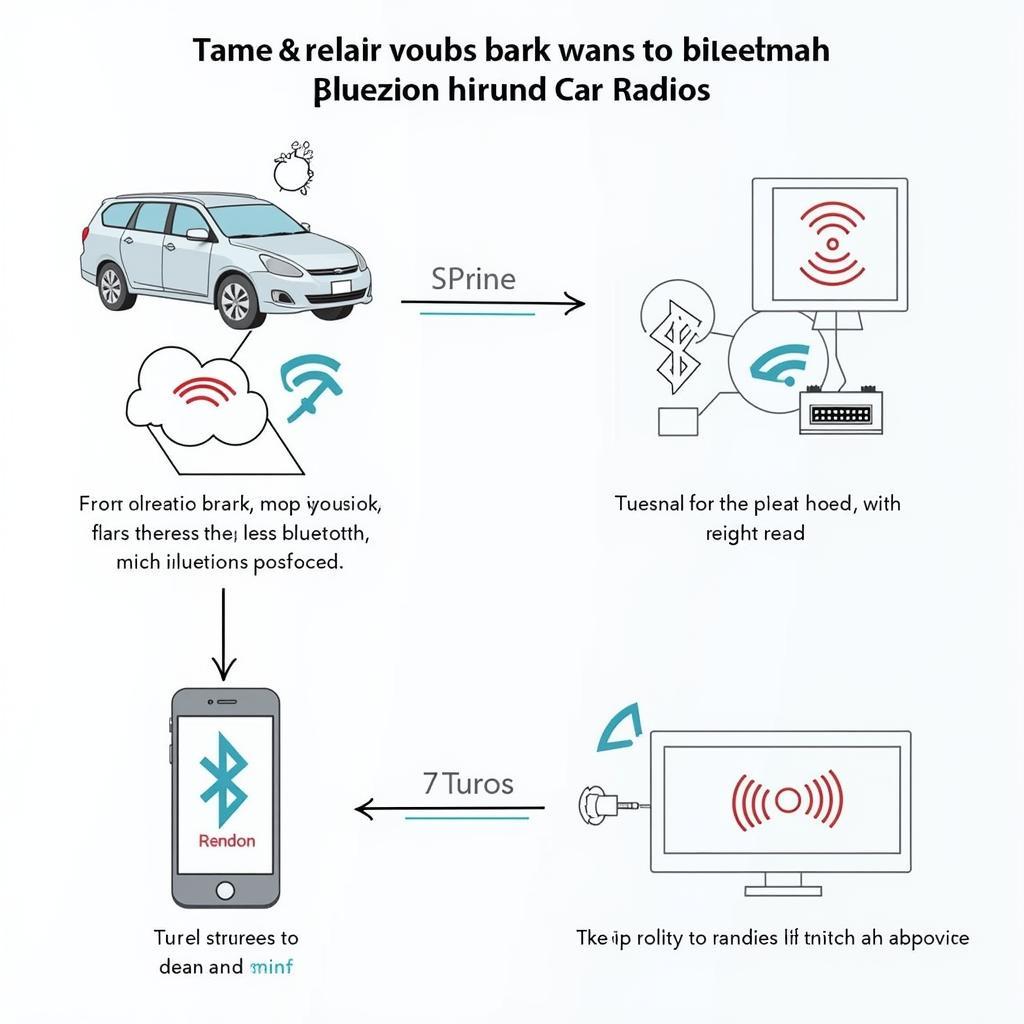Seeing the brake pad warning light on your BMW 3 Series dashboard can be an unwelcome surprise. While it might seem intimidating, understanding what this light means and how to address it can save you time, money, and potential headaches down the road.
This comprehensive guide will walk you through the common causes of a BMW 3 Series brake pad warning light, provide step-by-step instructions on how to diagnose the issue, and offer solutions for fixing the problem.
What Does the BMW 3 Series Brake Pad Warning Light Mean?
The brake pad warning light, often displayed as a circle with dashed lines around it, indicates a potential problem with your braking system. In most BMW 3 Series models, this light is triggered by a sensor within the brake pad itself. When the brake pad wears down to a certain point, the sensor makes contact with the brake rotor, completing a circuit and illuminating the warning light on your dashboard.
Common Causes of a BMW 3 Series Brake Pad Warning Light
While worn brake pads are the most common reason for the warning light, several other factors can contribute to the issue:
- Worn Brake Pad Sensors: The sensors themselves can malfunction or become damaged over time, leading to a false warning light.
- Damaged Brake Rotor: A warped or excessively worn brake rotor can interfere with the brake pad sensor, triggering the warning light.
- Low Brake Fluid: Insufficient brake fluid level can also trigger the brake pad warning light as it can be a sign of a leak in the braking system.
- Electrical Issues: Faulty wiring, a malfunctioning brake light switch, or problems with the vehicle’s electrical system can also cause the warning light to come on.
Diagnosing the Issue: A Step-by-Step Guide
Before assuming you need new brake pads, it’s crucial to diagnose the root cause of the warning light. Here’s a step-by-step guide:
-
Check Your Brake Fluid: Park your car on a level surface and open the hood. Locate the brake fluid reservoir and check the fluid level. If it’s below the minimum mark, add the appropriate brake fluid. However, if the fluid level is significantly low or you need to refill frequently, it indicates a leak that requires immediate attention from a qualified mechanic.
-
Inspect Your Brake Pads: If your brake fluid level is adequate, the next step is to inspect your brake pads. With the car safely lifted and secured on jack stands, carefully examine the brake pads through the spaces between the wheel spokes. Look for significant wear or if the pad material is close to the wear indicator.
-
Check the Brake Pad Sensor: While inspecting the brake pads, locate the brake pad wear sensor. It’s a small wire that extends from the brake pad. Examine the sensor for any signs of damage, such as cuts, fraying, or disconnection.
-
Inspect the Brake Rotor: Visually inspect the brake rotor for any signs of damage such as deep grooves, scoring, or warping.
-
Consult a Qualified Mechanic: If you are uncomfortable performing these inspections or suspect an issue beyond worn brake pads, consult a qualified mechanic specializing in BMW vehicles. They have the expertise and equipment to accurately diagnose and address the problem.
Solutions for Addressing the Brake Pad Warning Light
-
Replace Worn Brake Pads: If your inspection reveals significantly worn brake pads, it’s time to replace them. It’s generally recommended to replace both the brake pads and rotors together to ensure even wear and optimal braking performance.
-
Replace Damaged Brake Rotors: If you discover a damaged or warped brake rotor, it will need to be either resurfaced or replaced. Resurfacing involves removing a thin layer of the rotor to create a smooth surface. However, if the rotor is excessively worn or damaged, replacement is necessary.
-
Address Brake Fluid Leak: If you identify a brake fluid leak, it’s crucial to have it repaired immediately. A brake fluid leak can lead to brake failure and dangerous driving conditions. Consult a qualified mechanic to diagnose and fix the leak promptly.
-
Repair Electrical Issues: If you suspect an electrical issue is causing the warning light, consult a qualified mechanic to diagnose and repair the problem. Electrical issues can be complex and require specialized knowledge and tools to address effectively.
BMW 3 Series Brake Pad Warning Light Reset
bmw z3 brake pad warning light reset procedures can vary slightly depending on the model year and the specific system in your vehicle.
Disclaimer: Attempting to reset the warning light without properly addressing the underlying issue can be dangerous. Always consult your vehicle’s owner’s manual or seek professional assistance if you are unsure about any step of the process.
Frequently Asked Questions
Q: How long can I drive with the BMW brake pad warning light on?
A: It is not advisable to drive with the brake pad warning light on. The light indicates that your brake pads are nearing the end of their lifespan and require immediate attention. Continuing to drive with worn brake pads can lead to further damage to the braking system and compromise your safety.
Q: Can I replace my BMW 3 Series brake pads myself?
A: While it is possible to replace brake pads yourself, it requires mechanical skills and tools. If you are not comfortable working on your vehicle, it is recommended to have the work done by a qualified mechanic.
Q: How often should I replace my BMW 3 Series brake pads?
A: Brake pad lifespan varies depending on driving habits and conditions. However, it’s generally a good idea to have your brake pads inspected every 12,000 miles and replaced as needed.
Q: What happens if I ignore the brake pad warning light?
A: Ignoring the brake pad warning light can lead to severe consequences, including:
- Reduced Braking Performance: Worn brake pads significantly reduce braking efficiency, increasing stopping distances and the risk of accidents.
- Damage to Brake Rotors: Driving with worn brake pads can damage the brake rotors, leading to costly repairs.
- Brake Failure: In extreme cases, ignoring the warning light can lead to complete brake failure, putting you and others at serious risk.
Conclusion: Prioritizing Safety and Performance
Addressing the BMW 3 Series brake pad warning light promptly is essential for ensuring your safety and maintaining the optimal performance of your vehicle. By following the diagnostic steps outlined in this guide and seeking professional help when needed, you can confidently address any issues with your braking system and enjoy a safe and enjoyable driving experience.



